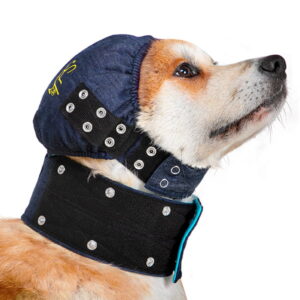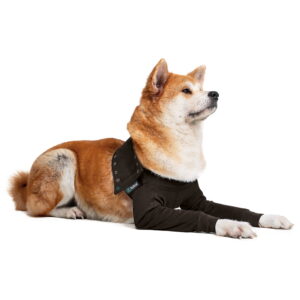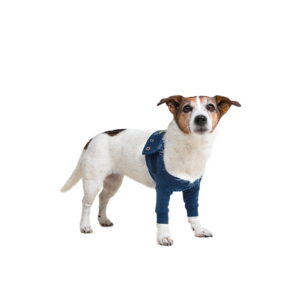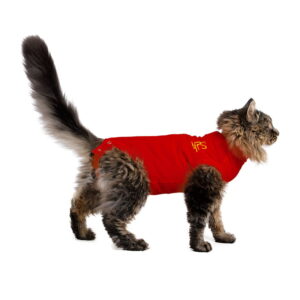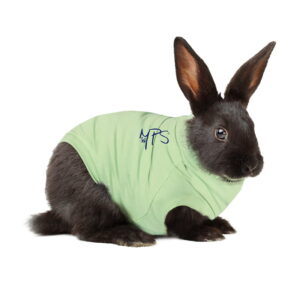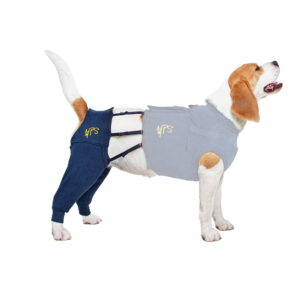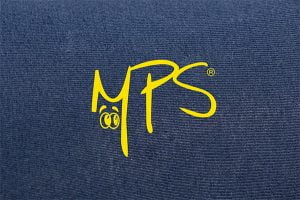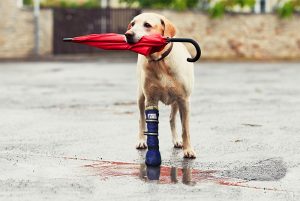Helping Wounds Heal: Recovery Suits (A Cone Alternative) for Dogs & Cats
Looking for a comfortable cone alternative? Recovery suits (sometimes called protective onesies or barrier garments) stop licking, protect stitches and hot spots, and help many pets heal more calmly than when wearing a plastic cone. This guide explains how they work, when to use them, how to size and fit, and the everyday practicalities like toilet breaks and cleaning—plus where to buy vet-trusted options.
—
What is a recovery suit (barrier garment)?
A recovery suit is a soft, breathable body garment for dogs and cats that covers surgical sites or irritated skin so pets can’t lick, chew, or scratch. Think of it as a comfortable, flexible shield. These suits:
- protect stitches and sensitive areas without harsh bandages,
- allow airflow to support a healthy moisture balance,
- reduce stress compared with rigid cones,
- are easy for you to put on, adjust, and wash.
Barrier garment is the clinical term; most pet owners search for “recovery suit,” “cone alternative,” or “post-surgery suit.”
How recovery suits support natural healing
Healthy wound repair needs moisture balance, protection from contamination, and minimal disturbance:
- Balanced microclimate: breathable fabric helps keep tissue hydrated enough for cell migration without becoming soggy.
- Fewer setbacks: blocking licking/chewing prevents reopened stitches and bacterial contamination.
- Less handling: instead of frequent bandage changes, a suit stays in place while you still check the site daily.
- Calmer pets: freedom to eat, drink, walk, and sleep normally lowers stress hormones that can slow healing.
—
Recovery suit vs cone (E-collar)
Both prevent self-trauma—but in different ways.
Recovery suits (cone alternatives)
- Comfort: allow normal eating, drinking, navigating doorways, and sleep positions.
- Coverage: protect body sites (abdomen, flanks, chest, back, groin, perineal area).
- Compliance: many anxious pets tolerate a suit better, so they keep it on.
Cones (E-collars)
- Coverage: protect face/ear/eye areas better than a body suit.
- Drawbacks: can bump into furniture, reduce whisker sensitivity in cats, hinder sleep, and raise stress in some pets.
Best of both: for facial procedures you may need a cone; for body sites, a recovery suit is often the kinder choice. Your vet will advise the right tool—or a combination—for your pet.
—
When to use one (post-surgery, hot spots, allergies)
Recovery suits are helpful for:
- Post-spay/neuter, lump removals, abdominal or flank surgery, C-section
- Hot spots, dermatitis, and allergy flare-ups (reduces itch-scratch cycle)
- Chronic licking/chewing (paws, groin, tail base) and minor abrasions
See your vet urgently if you notice any of the following: heat, increasing redness, swelling, discharge/pus, foul odour, fever, sudden pain, or a pet that becomes very quiet or refuses food.
How long to wear
- Spay/neuter: usually 10–14 days, or as your vet advises
- Hot spots/dermatitis: until skin is closed and calm, then 2–3 more days
- Surgical incisions: until stitches are removed or your vet confirms healing
—
How to measure and fit (size guide)
A good fit keeps the suit in place without rubbing or restricting movement.
What you’ll need: a soft tape measure, your pet standing.
1) Back length: from the base of the neck (between shoulder blades) to the base of the tail. 2) Chest girth: around the widest part of the ribcage (behind the front legs). 3) Neck: around the base of the neck where a collar sits. 4) Weight: useful as a tiebreaker between sizes.
Fit tips
- Between sizes? For post-op swelling or fluffy coats, go up one size.
- Snug but not tight: you should slide two fingers under the fabric.
- Check movement: your pet should walk, sit, and lie down comfortably.
- Daily skin checks: open/roll back the suit once or twice a day to inspect the site.
Jump to: Measure and fit • Or view suits with size filters: Shop Recovery Suits
—
Everyday use: eat, sleep, toilet
- Eating and sleeping: most pets eat and nap normally in a suit. Many settle faster than in a cone.
- Toilet breaks: most recovery suits include a fold-back or snap-away panel. Roll the panel back for wee/poo, secure it using the built-in loop or fasteners, then re-cover after. For males, ensure the prepuce is covered again after toileting. For cats, confirm free leg movement for easy litter-tray use.
- Walks and play: lead walks only while healing. Avoid rough play, zoomies, and jumping until your vet gives the all-clear.
—
Cleaning and care
- Wash frequency: daily if soiled, otherwise every 2–3 days. Keep a spare suit so you can rotate.
- How to wash: close fasteners, turn inside out, machine wash cold or 30 °C on gentle with mild detergent, no bleach or fabric softener.
- Drying: air-dry flat or line-dry. Avoid tumble drying and direct high heat.
- Quick refresh: wipe minor marks with a damp cloth between washes.
—
Vet guidance and safety
This guide complements, not replaces, veterinary advice. Always follow your vet’s post-op instructions.
Safety checklist
- Check the incision or skin twice daily.
- Keep the suit clean and dry; change immediately if wet or soiled.
- Ensure breathing and circulation are never restricted (neck and chest should be comfortable).
- Monitor temperature in hot weather; choose breathable, hypoallergenic fabrics.
- If your pet still reaches the area, contact your vet—an additional cone or different size/brand may be needed.
When a cone may be better
- Face, ear, or eye procedures
- Pets determined to nibble at exposed paws or tails (some cases need both tools)
—
Quick answers (FAQ)
Q: Are recovery suits safe for dogs and cats? A: Yes—when properly sized and kept clean. They’re widely used after surgery and for skin conditions to prevent licking and scratching.
Q: Can my pet wee/poo while wearing it? A: Yes. Use the fold-back/snap-away panel during toilet breaks, then re-cover the area afterwards.
Q: Do recovery suits help wounds heal faster? A: By reducing licking, contamination, and repeated bandage changes, they help maintain a healthy healing environment—which can support faster, more comfortable recovery.
Q: How long should my pet wear it after surgery? A: Typically 10–14 days, or until your vet removes stitches/approves discontinuing protection.
Q: What size should I buy? A: Measure back length and chest girth first, then use weight as a tiebreaker. If between sizes, choose the larger for comfort.
Q: How do I clean it? A: Close fasteners, wash cold/gentle, air-dry. Keep a spare suit for easy rotation.
—
Understanding how pets heal (the science in simple terms)
Healing progresses through hemostasis, inflammation, proliferation, and remodelling. Gentle protection, minimal disturbance, and a balanced moisture environment support these phases. Overly dry skin slows cell migration; overly wet skin macerates. Breathable suits act as a lightweight, semi-occlusive barrier—limiting contamination and self-trauma while allowing vapour exchange.
Traditional methods like harsh sprays, slipping bandages, or rigid cones can add stress or friction. Recovery suits offer a kind, low-handling alternative that many pets (and owners) find easier to live with—especially for body incisions and itchy skin.
—
If you’re unsure about sizing or whether a suit is right for your pet, our team is happy to help via chat or email. We care about calm, comfortable recoveries—for you and your best friend.

